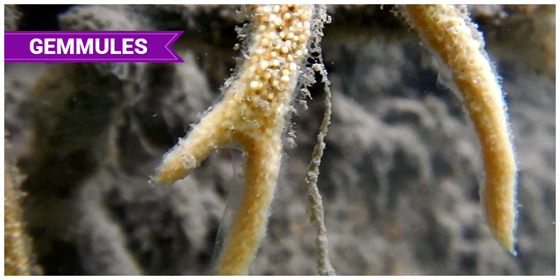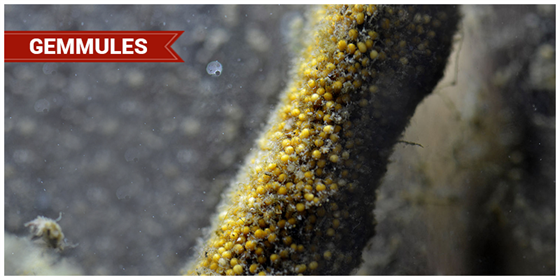Table of Contents
Gemmule
An asexually produced mass of cells, which are capable of developing into a new organism or into an adult freshwater sponge, is termed a Gemmule. They are small bud-like cells, which are formed by sponges to withstand unfavourable environmental conditions. A freshwater sponge reproduces both sexually and asexually.
Asexual reproduction is mainly carried out by budding and also by gemmulation. The internal buds, which are formed by the freshwater sponges, are called gemmules. These gemmules are tough and coated with a dormant cluster of embryonic cells. Freshwater sponges are multicellular, marine living species of Phylum – Porifera. The species of this phylum include sponges, Ficulina ficus, sea sponges and much more. All the species are related to the same phylum and carry the same characteristic features.

The Role of Gemmule in Sponge Reproduction
The internal buds gemmules are resistant to dehydration, and freezing and can survive even without an oxygen supply. The outer layer of the gemmule is enclosed and protected by the endospore that is surrounded by a layer of spicules, which helps the gemmule from all other unfavourable environmental conditions and also helps gemmules in growing into an adult freshwater sponge.

Gemmules are usually found in a round or ball-like structure, along with a central mass of amoeboid cells and a thick peripheral layer of a small siliceous spicule.
The structure of Gemmules includes Micropyle, Spicule, Inner layer, Archaeocytes and an Outer pneumatic layer. The micropyle is an outer coat of a cell with a minute opening, and the peripheral layer is made up of a thick pneumatic layer and air chambers, which helps gemmules to float in water bodies. The Archaeocytes are reproductive cells, and the spicule is the sharp-pointed structure which is involved in protecting the gemmules from predators and also provides structural support to the gemmules.
How are Gemmule produced?
Gemmule is produced by a few genera of freshwater sponges such as Spongilla and some marine species, including ficulina ficus, sea sponges, and other poriferans, which produce gemmules to survive in unfavourable conditions and germinate and produce new sponges.
During gemmule formation, the archaeocytes- totipotent cells, which are loaded with food material in the form of glycoprotein or lipoprotein get combined into a mass. An amoebocyte – a cell with motility, move and surround the central mass of archaeocytes and starts to secrete thick solid chitin around archaeocytes and forms a layer around it. Amphidisc spicules are secreted by sclera oblasts in between the internal and external membranes. A completely formed gemmule is normal in size, hardball-like structure, having a mass of food loaded with reproductive cells, which are embedded in a double membrane layered thick envelope with amphidisc spicules in between. There is a minute opening called Micropyle through which the cells come out during development in favourable conditions.
During autumn, freshwater sponges die by leaving behind numerous gemmules. These gemmules produced by the sponges remain active by withstanding unfavourable environmental conditions both in the winter and summer seasons. Gemmules begin to develop into new sponges when there is an abundance of water.
Learn more in detail about what is stomata, their structure, functions and other related topics at BYJU’S Biology.

Comments